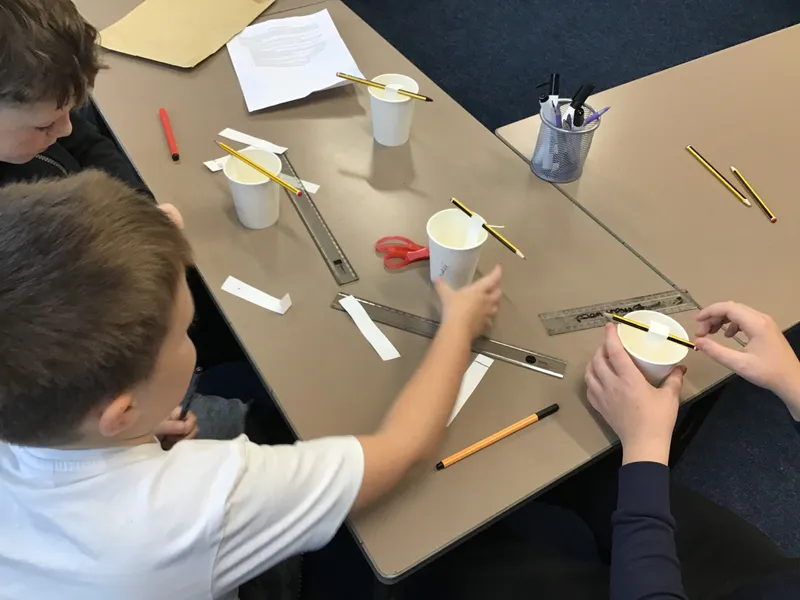STEM 2021 /22






What is STEM?
The term STEM is used to describe science, technology, engineering and mathematics.
*Science is the intellectual and practical activity encompassing the systematic study of the structure and behaviour of the physical and natural world through observation and experiment.
*Technology is the collection of techniques, skills, methods, and processes used in the production of goods or services. It’s the application of scientific knowledge for practical purposes, especially in industry.
*Engineering is the branch of science and technology concerned with the design, building, and use of engines, machines, and structures.
*Mathematics is the science that deals with the logic of shape, quantity and arrangement. Maths is all around us, in everything we do. It is the building block for everything in our daily lives.
What is the intent of STEM education?
The purpose of STEM education is to develop STEM and to engage with understanding in modern debates and scientific and technological developments and their implications.
STEM is a means of offering coherent learning experiences that make connections between the individual curriculum subjects explicit and enhance learning in all of them.
e.g. Picture an architect, they use science, math, engineering and technology to do their jobs.
The subjects do not work on their own, instead they are woven together in practical and seamless ways allowing the architect to design complex buildings.
How do we implement STEM?
STEM supports so much with the way children’s minds learn and work from a very early age and the best way to foster a love of STEM is to encourage curiosity.
From a young age encourage children to question, to explore and to play. This can at times be lost as children move through Key Stage 1 and 2, but we aim to give all children the opportunity to develop STEM - allowing children to explore, play and problem solve.
We invite STEM Ambassadors and STEM professionals into our school to talk to and work with, the children.
We are reviewing the discrete teaching of STEM subjects and look for further opportunities to teach through a more integrated approach.
What is the Impact of STEM?
- Children will develop an understanding of STEM.
- Children will become enthusiastic, motivated with resilient and curious with STEM and develop the questioning skills..
- Children will be exposed to STEM vocabulary.
- Children will work collaboratively and practically to investigate STEM activities.
- Children will have an awareness of the range of STEM careers and pathways available to them and will be keen to pursue STEM subjects at secondary school and higher education.
YEAR 5 /6 children enjoying a STEM activity set by FUTURES2021
The children had to be detectives and solve a ransom note - working out which pen was used to write the note. Each group had a pack, which contained: Filter paper, different pens, cups and a set of instructions. They looked at chromatography (the separation of mixtures). One dot with one pen was put on the filter paper. This was then dipped into the water, making sure the dot did not get wet. Children observed the process of chromatography. It was a great activity for all the children. The children successfully identified the correct pen to the ransom note.
The class had a follow up feedback session via zoom with two students from the chemistry department at the University of Bristol. The class were able to explain their findings and were given the opportunity to learn more about the student's studies and were even given a tour of the chemistry block.
Year 1 Lego First Discovery
Year One have been taking part in this STEM programme. During the sessions children explore through real world themes and learn through play to develop early STEM skills. The children learn skills such as becoming designers, architects, technologists and engineers. Through this programme they learn that these subjects are fun, creative and exciting. The children worked in small groups to design their own town, they drew pictures and tried different ideas with the Lego before the final build. At the end of the programme the children had developed their language, problem-solving and ability to work collaboratively.











Robotic Engineering
In KS2 children developed their understanding of the design process along with their collaboration and communication skills by working in small teams to learn how to build modular robots. Students built a range of robots which react to the environment around them, used their creativity to modify them and build prototypes to complete challenges.







Electronic club
At Shield Road we have been fortunate to have parents support with engineer clubs. The children learnt about circuits made their own Christmas tree circuits.






STEM activity to try at home
https://futuresnight.co.uk/do-try-this-at-home/
https://education.theiet.org/campaigns/santa-loves-stem/
Feedback from STEM ambassadors
Dear head teacher
Thank you to you and your staff for your commitment to increasing your students' awareness of the range of possibilities opened up by studying STEM subjects. We are delighted to enclose a certificate of recognition to mark your school's commitment to working with STEM Ambassadors.
Evidence shows that engaging with STEM Ambassadors can help young people to achieve their full potential in STEM subjects as well as inspiring them to explore STEM careers:






























